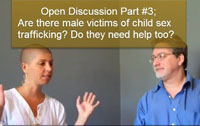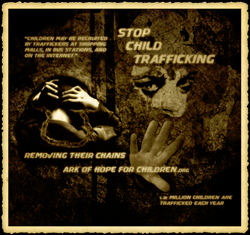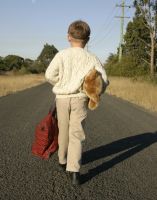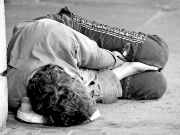Sex Trafficking Discussion Part&npsp;3 & Statistics
by Fernanda Mejia from Project For Healing Humanity
 Child Sex Trafficking Discussion #2 of 3. Blair Corbett from of Ark of Hope for Children interviewed by Fernanda Mejia from Project For Healing Humanity. Discussion includes what survivors need post rescue and some of what they face inside the world's second largest industry..
Child Sex Trafficking Discussion #2 of 3. Blair Corbett from of Ark of Hope for Children interviewed by Fernanda Mejia from Project For Healing Humanity. Discussion includes what survivors need post rescue and some of what they face inside the world's second largest industry..
As discussed on the international child trafficking statistics noted in the discussion below, human trafficking victims can be male or female, under 4 to 25 years old that has been traded for sex multiple times a day. Victims of trafficking may not even speak the native language, having been bought, sold and brought here from another country. Survivors need medical attention for abuse, possible drug addiction, STD's and a full range of possible mental issues including post traumatic stress.
Ark of Hope for Children compiled the following U.S. and international statistics on human trafficking, child trafficking and sex trafficking.thumb Prostituted sm These trafficking stats were sought so we could research the needs of rescued child trafficking victims. These became our keys towards our plan for the Harbourage safe homes for child trafficking survivors. Statistics are updated bi-yearly and sources are at the end.
"When a child has been recruited, transported, harbored, or received and some commercial element is introduced in the production of child pornography, then that individual has also engaged in child trafficking. Whether they work in strip clubs or sweatshops, these boys and girls are victims of human trafficking."
The Trafficking Victims Protection Act (TVPA) defines 'severe forms of trafficking in persons' as: sex trafficking in which a commercial sex act is induced by force, fraud, or coercion, or in which the person induced to perform such an act has not attained 18 years of age.
Where do trafficked children come from?
Child trafficking victims, whether for labor, sex or organ trafficking, come from all backgrounds, include both boys and girls. They span a wide age range from 1 to 18 years old. Sex trafficking victims up to roughly 25 years old most often started as young as 14. Children are trafficked out of, or into the United States from all regions of the world and represent a variety of different races, ethnic groups and religions. They may be brought to the U.S. legally or smuggled in.

Trafficked children can be lured to the U.S. through the promise of school or work and promised the opportunity to send money back to their families. Children are also vulnerable to kidnappers, pimps, and professional brokers. Some children are even sold to traffickers by their families, who may or may not have an understanding of what will happen to the child. U.S. born children are also trafficked within the U.S., coming from any racial group, socio-economic background, and come from or trafficked within both city and rural areas.
The Economics of Sex Trafficking
Update: In 2012 the (UNODC) United Nations Office on Drugs and Crime reports the percentage of child victims had risen in a 3 year span from 20 per cent to 27 per cent. Of every three child victims, two are girls and one is a boy. Gender and age profile of victims detected globally: 59% Women - 14% Men - 17% Girls and 10% were Boys
- 600,000 to 800,000 women, children and men bought and sold across international borders every year and exploited for forced labor or commercial sex (U.S. Government)
- When internal trafficking victims are added to the estimates, the number of victims annually is in the range of 2 to 4 million
- 50% of those victims are estimated to be children
- It is estimated that 76 percent of transactions for sex with underage girls start on the Internet
- 2 million children are subjected to prostitution in the global commercial sex trade (UNICEF)
- There are 20.9 Million victims of Trafficking World wide as of 2012
- 1.5 Million victims in the United States
The Impact on children, and society
- Human trafficking has surpassed the illegal sale of arms
- Trafficking will surpass the illegal sale of drugs in the next few years
- Drugs are used once and they are gone. Victims of child trafficking can be used and abused over and over
- A $32 billion-a-year industry, human trafficking is on the rise and is in all 50 states (U.S. Government)
- 4.5 Million of trafficked persons are sexually exploited
- Up to 300,000 Americans under 18 are lured into the commercial sex trade every year
- From 14,500 - 17,500 of those victims are trafficked into the United States each year
According to non-governmental U.S. sources;
- Average victims age is 11 to 14
- Approx 80% are women and children bought, sold and imprisoned in the underground sex service industry
- Average life span of a victim is 3 to 7 years (found dead from attack, abuse, HIV and other STD's, malnutrition, overdose or suicide)
The largest group of at-risk children are runaway, thrown away, or homeless American children who use survival sex to acquire food, shelter, clothing, and other things needed to survive on America's streets. According to the National Runaway Switchboard 1.3 million runaway and homeless youth live on America's streets every day. [5,000 die each year] It would not be surprising to learn that the number of children trafficked in the United States is actually much higher than 300,000.

Children are often targeted by traffickers as they are deemed easier to manipulate than adults. More money can be earned by younger girls and boys exploited in sexual exploitation, especially virgins. Pre-pubescent girls are reported to be injected with hormones to bring on puberty. Younger girls are expected to have a greater earning potential, and as such are in greater demand.
The Emotional Toll- Physical and Mental Consequences of Trafficking for victims
- Child victims of human trafficking face significant problems. Often physically and sexually abused, they have distinctive medical and psychological needs that must be addressed before advancing in the formative years of adulthood.
- Child victims of exploitation can face a number of long-term health problems:
- Sleeping and eating disorders
- Sexually transmitted diseases
- HIV/AIDS, pelvic pain, rectal trauma and urinary difficulties from working in the sex industry
- Drug addiction
- Chronic back, hearing, cardiovascular or respiratory problems from endless days toiling in dangerous agriculture, sweatshop or construction conditions
- Fear and anxiety
- Depression, mood changes
- Guilt and shame
- Cultural shock from finding themselves in a strange country
- Posttraumatic Stress Disorder
- Traumatic bonding with the trafficker
- Unemployment and perceived job opportunities overseas (into the U.S.)
- Unhappy home situation: The victim may be in an abusive situation, their family may be in debt, or there may be an addict in the family
- Relatives and friends live in the destination country
- Returning migrants, legal and illegal, say they have made a better living for themselves
What is the draw, not just the money
Demand for cheap labor and for prostituted women, girls, and boys is the primary "pull" factor. Common push and pull factors exploited by traffickers include:

Sex buyers are far more complicit in the victimization of sex trafficking victims. Sex tourism and child pornography have become worldwide industries, facilitated by technologies such as the Internet, which vastly expand the choices available to pedophiles and permit instant and nearly undetectable transactions.
Trafficking Victims
Many youth, especially U.S. citizen children trafficked within the U.S., run away from problems at home and may be exploited as a result of emotional vulnerability, homelessness and the need to survive. Youth who run away from home and engage in "survival sex" often find themselves vulnerable to pimps and traffickers involved in prostitution networks. Approximately 55% of street girls, and a good percentage of boys, engage in formal prostitution and some think it is much higher than that. This means that a child client who has been homeless or living on the street for any amount of time has a great likelihood of having been sexually exploited or trafficked.
The sexual exploitation of children is not limited to particular racial, ethnic or socioeconomic groups, although children from poor families appear to be at somewhat higher risk of commercial sexual exploitation. In fact, most of the street children encountered in the study were Caucasian youths who had run away from middle-class families. One clear theme is the is proportionate number of street youth who have histories of recurrent physical or sexual abuse at home and took to the streets in a desperate effort to bring their abuse to an end.
According to these researchers, child sexual exploitation in the United States affects as many boys as girls, but boys are less well-served by social service and law enforcement systems because of the widespread belief that boys are better able than girls to fend for themselves. Without intervention, research has shown many boys shift from being victims of sexual abuse to victimizing other boys and girls as pimps and traffickers.
People are recruited in several different ways such as through fake employment agencies, acquaintances, newspaper ads, front businesses, word of mouth or abduction. Traffickers may be neighbors, friends, returnees, agricultural operators, owners of small businesses, diplomats and even families. Increasingly, however, the traffickers are organized crime syndicates, often in collaboration with corrupt law enforcement entities, government officials or employers, who may use several intermediaries from the first point of contact to the final destination of the victim. If the victim is transported, they use both legal and illegal means of transport and various techniques to keep their victim enslaved.
They may keep them under lock and key or in isolation from the public and from their family members or support networks, confiscate their passports or identification documents, use the threat of violence against the enslaved person or their families, threaten them with shame, fear of imprisonment or deportation, and control their money.
The Emotional Toll
The psychological effects of torture are helplessness, shame and humiliation, shock, denial and disbelief, disorientation and confusion, and anxiety disorders including post traumatic stress disorder, phobias, panic attacks and depression. Victims may experience Traumatic Bonding (Stockholm Syndrome)- a form of coercive control in which the perpetrator instills in the victim fear as well as gratitude for being allowed to live or for any other perceived favors, however small.
Related Articles
Sex Trafficking, an introduction read more>>
Sex Trafficking Victims & Statistics - Interview Video #1 read more>>
ABOUT THE AUTHOR
Blair Corbett, founder, Ark of Hope for Children visit The Ark of Hope at www.arkofhopeforchildren.org for more helpful articles by Blair.
Additional Resources U.S. and international trafficking statistics
2012 UNITED NATIONS OFFICE ON DRUGS AND CRIME Global Report- ViennaChild Exploitation and Online Protection Centre, Hanoi
Child Trafficking Update- October 2011
Child Victims of Human Trafficking Report- Dept Health & Human Services
Crimes Against Children Report- Interpol-September 2009
Defender Foundation
FBI on Human Sex Trafficking- March 2011
National PTA Resolution on Child Trafficking
Polaris Project
Trafficking in Human Beings Report- Interpol- December 2009
Trafficking Victims Protection Act
U.S. Trafficking In Persons Report- June 2011
U.S. Trafficking In Persons Report- June 2012
 Find us on Facebook
Find us on Facebook Childabuse &
Childabuse & 
 all rights reserved.
all rights reserved.
